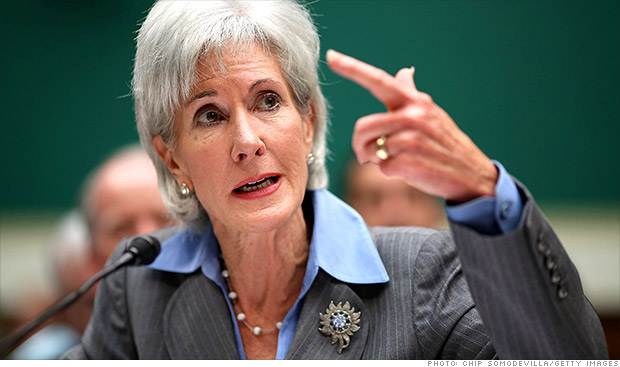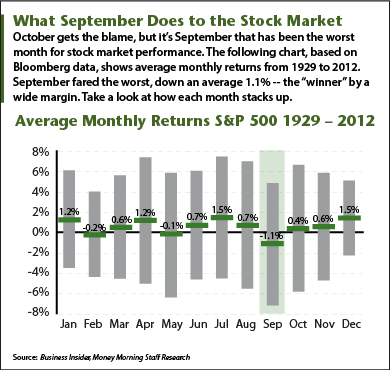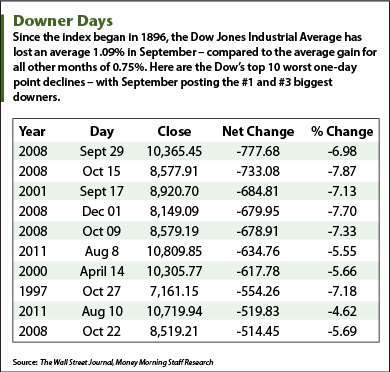A share repurchase or buyback simply refers to a publicly traded company buying back its own shares from the marketplace. Along with dividends, share repurchases are an avenue for a company to return cash to its shareholders. Many of the best companies strive to reward their shareholders through consistent dividend increases and regular share buybacks. A share repurchase is also known as "float shrink" since it contracts a company's freely trading shares or share float.
Repurchase Impact on EPS
Since a share repurchase reduces a company's outstanding shares, its biggest impact is evident in per-share measures of profitability and cash flow such as earnings per share (EPS) and cash flow per share (CFPS). Assuming that the price/earnings (P/E) multiple at which the stock trades is unchanged, this should eventually result in a higher share price.
As an example, consider the case of a hypothetical company – call it Birdbaths & Beyond (BB) – which had 100 million shares outstanding at the beginning of a given year. The stock was trading at $10, giving BB a market capitalization of $1 billion. BB had net income of $50 million or EPS of 50 cents ($50 million/100 million shares outstanding) in the preceding 12 months, which means that the stock was trading at a P/E of 20 (i.e. $10/50 cents). Assume BB also had excess cash of $100 million at the start of the year, which it deployed in a share repurchase program over the next 12 months. So at the end of the year, BB would have 90 million shares outstanding. For the sake of simplicity, we have assumed here that all the shares were repurchased at an average cost of $10 each, which means that a total of 10 million shares were repurchased and canceled by the company.
Suppose BB earned $50 million in this year as well; its EPS would now be about 56 cents ($50 million/90 million shares). If the stock continues to trade at a P/E multiple of 20, the share price would now be $11.20. The 12% stock appreciation has been entirely d! riven by the EPS increase thanks to the reduction in BB's outstanding shares.
Driving Shareholder Value
A couple of simplifications have been used here. First, EPS calculations use a weighted average of the shares outstanding over a period of time, rather than just the number of shares outstanding at a particular point. Second, the average price at which the shares are repurchased may vary significantly from the shares' actual market price. In the example above, buying back 10% of BB's outstanding shares would quite possibly have driven up its stock price, which means that the company would end up buying back less than the 10 million shares we have assumed for its $100 million outlay.
These simplifications understate the magnified effect that consistent repurchases have on shareholder value. Companies that consistently buy back their shares can grow EPS at a substantially faster rate than would be possible through operational improvements alone. This rapid EPS growth is often recognized by investors, who may be willing to pay a premium for such stocks, resulting in their P/E multiple expanding over time. In addition, companies that generate the free cash flow required to steadily buy back their shares often have the dominant market presence and pricing power required to boost the bottom line as well.
Going back to the BB example, assume the company's P/E multiple rose to 21 (from 20), while net income grew to $53 million (from $50 million). After the buyback, BB's stock would be trading at about $12.40 (i.e. 21 x EPS of 59 cents, based on 90 million shares outstanding) at year-end, an increase of 24% from its price at the beginning of the year.
Impact on Financial Statements
A share repurchase has an obvious effect on a company's income statement, since it reduces its outstanding shares. But it also impacts other financial statements.
On the balance sheet, a share repurchase will reduce the company's cash holdings, and consequently its total as! sets base! , by the amount of the cash expended in the buyback. The buyback will simultaneously also shrink shareholders' equity on the liabilities side by the same amount. As a result, performance metrics such as return on assets (ROA) and return on equity (ROE) typically improve subsequent to a share buyback.
Companies generally specify the amount spent on share repurchases in their quarterly earnings reports. The amount spent on share buybacks can also be obtained from the Statement of Cash Flows in the "Financing Activities" section, as well as from the Statement of Changes in Equity or Statement of Retained Earnings.
Impact on Portfolios
Share repurchases can have a significant positive impact on an investor's portfolio. For proof, one only has to look at the S&P 500 Buyback Index, which measures performance of the 100 companies in the index with the highest buyback ratio (calculated as the amount spent on buybacks in the past 12 months as a percentage of the company's market capitalization). In the 10 years ending Nov. 8, 2013, the S&P Buyback Index had surged 158.2%, compared with a gain of 68.1% for the S&P 500, outperforming it by 90 percentage points.
What accounts for this degree of outperformance? Like a dividend increase, a share repurchase indicates a company's confidence in its future prospects. Unlike a dividend hike, a buyback signals that the company believes its stock is undervalued and represents the best use of its cash at that time. In most cases, the company's optimism about its future pays off handsomely over time.
Share Repurchases vs. Dividends
While dividend payments and share repurchases are both ways for a company to return cash to its shareholders, one notable difference is that dividends represent current payoff to an investor, while share buybacks represent a future payoff. This is one reason why investor reaction to a stock that has announced a dividend increase will generally be more positive than to one announcing an increase in its buyback program.
Another difference has to do with taxation, especially in jurisdictions where dividends are taxed less favorably than long-term capital gains. Assume you acquired 100,000 shares of BB – the company mentioned in the example earlier – at $10 each, and you live in a jurisdiction where dividends are taxed at 20% and capital gains are taxed at 15%. Suppose BB was debating between using its $100 million in excess cash for buying back its shares from you, its only shareholder, or paying it out to you as a special dividend of $1 per share. While the buyback would have no immediate tax impac! t on you, if your BB shares were held in a taxable account, your tax bill in the event of a special dividend payout would be quite hefty at $20,000. If the company proceeded with the buyback and you subsequently sold the shares at year-end at $11.20, the tax payable on your capital gains would still be lower at $18,000 (15% x 100,000 shares x $1.20). Note that $1.20 represents your capital gain of $11.20 minus $10 at year-end.
Overall, while share repurchases may be better for building one's net worth over time, they do carry more uncertainty than dividend payments, since the buybacks' value depends on the stock's future price. If a company's float has contracted by 20% over time but the stock subsequently plummets 50%, an investor would in retrospect prefer to have received that 20% in the form of actual dividend payments.
Capitalizing on Share Repurchases
For companies that raise dividends year after year, one needs to look no further than the S&P 500 Dividend Aristocrats, which includes companies in the index that have boosted dividends annually for at least 25 consecutive years. For share repurchases, the S&P 500 Buyback Index referred to earlier is a good starting point to identify companies that have been aggressively buying back their shares.
While most blue chips buy back shares on a regular basis – usually to offset dilution caused by the exercise of employee stock options – investors should watch for companies that announce special or expanded buybacks. For example, in October 2013, IBM (NYSE:IBM) announced a $15 billion addition to its repurchase plan; with sales declining for six successive quarters, the buyback was expected to enable IBM to reach its adjusted EPS target of $20 by 2015.
"Float shrink" ETFs have also attracted a great deal of attention after a sizzling performance in 2013. The PowerShares Buyback Achievers Portfolio (NYSE:PKW) is the biggest ETF in this category. The ETF invests in U.S. companies that have repurchased at ! least 5% ! of their outstanding shares over the previous 12 months, and as of Nov. 5, 2013, it was up 38.4% for the year. Another popular but much smaller ETF is the TrimTabs Float Shrink ETF (NYSE:TTFS), which was up 34.9% as of the same date.
Conclusion
Share repurchases are a great way to build investor wealth over time, although they have a higher degree of uncertainty than dividends.
 Bloomberg
Bloomberg  NEW YORK (CNNMoney) At a House hearing on Wednesday, U.S. Secretary of Health Kathleen Sebelius acknowledged security concerns facing Healthcare.gov but said the site had not been hacked.
NEW YORK (CNNMoney) At a House hearing on Wednesday, U.S. Secretary of Health Kathleen Sebelius acknowledged security concerns facing Healthcare.gov but said the site had not been hacked.  Agence France-Presse/Getty Images
Agence France-Presse/Getty Images 


 ) on Friday, noting that the company has a number of positive developments that could provide a floor for the stock.
) on Friday, noting that the company has a number of positive developments that could provide a floor for the stock.

 Securities and Exchange Commission Chairwoman Mary Jo White told lawmakers Tuesday that the agency was “focused” on completing a fiduciary duty rule proposal and that “it’s important for me to get to wherever we are going on that [rulemaking] as quickly as we can.”
Securities and Exchange Commission Chairwoman Mary Jo White told lawmakers Tuesday that the agency was “focused” on completing a fiduciary duty rule proposal and that “it’s important for me to get to wherever we are going on that [rulemaking] as quickly as we can.”








 KC-767Aeronautica Militare refueling B-52H. Source: Wikimedia Commons.
KC-767Aeronautica Militare refueling B-52H. Source: Wikimedia Commons. 

